Foam-filled wheels for power chairs seem too good to be true. Wheelchair tires that don’t go flat? It’s enough to make any consumer look past traditional pneumatic varieties to this shiny advanced technology.
But before you go out and purchase replacements for your chair, there are a few important things to know about airless wheels. Foam filled tires may not be the setup for everyone. Let’s roll into it and find out what they have to offer!
Wheelchair Tires Overview
Before we jump into the deep end, note that there are three main types of wheelchair tires: pneumatic, foam-filled, and urethane.
Here’s a quick description of each:
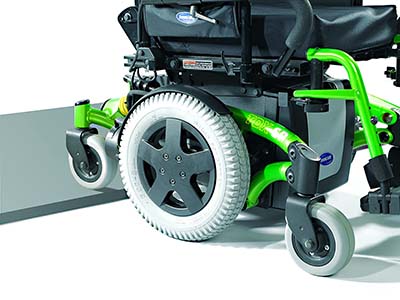
We’ll be focusing on foam-filled wheelchair tires or this guide, but before we do, it’s important to note that one type isn’t better than another.
Every wheelchair user leads a different lifestyle. That’s why it’s important to be clear about your objectives and what you want to accomplish with your wheels.
You’ll want to consider factors such as the model of your wheelchair, tire size, tread pattern, wheel/caster type, and cambered wheels.
Also, take into account the type of terrain you travel over frequently, the environment where you live/work, or the activities you partake in.
Now, without further ado, let’s discuss what foam-filled wheelchair tires are and the advantages they offer.
What Are Foam-Filled Tires?
Foam-filled tires are solid tires that look pretty much the same as air-filled tires. They feature the same exterior design and tread, except there is no inner tube.
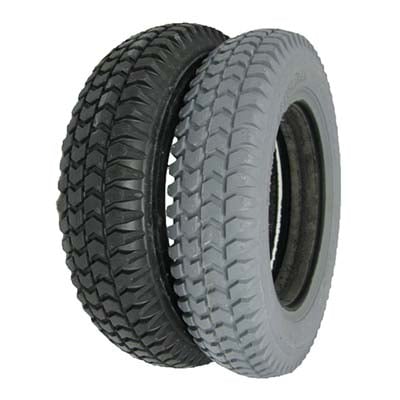
The tire is filled with foam that hardens. This prevents punctures caused by sharp objects, such as over glass, nails, or screws. In other words, these babies will never go flat!
Foam-filled tires for wheelchairs render the max PSI rating, which allows them to absorb some shock- but not much (we’ll touch on that later).
What Type of Foam is Used to Fill Tires?
Polyurethane rubber is used to fill foam tires. This material is dense yet soft, making the tire flexible while retaining characteristics similar to a conventional air tire.
Foam Filled Tires vs Air-Filled Tires
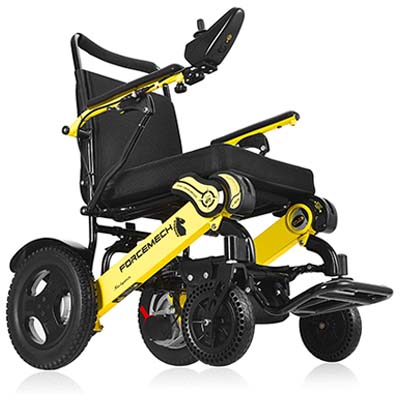
Foam-filled wheelchair tires offer certain advantages that air-filled tires just can’t compete with, particularly if you live in an area with rough, rugged terrain. However, air-filled does have its perks, too.
It goes without saying that foam tires are more durable than air-filled. They are solid and flexible, with no chance of going flat. They last longer than pneumatic tires, making them ideal for people who work on construction sites or in agriculture.
One advantage that air-filled tires have over foam is that they are 2-3 times lighter and therefore easier to push. This makes pneumatic ideal for urban living or for playing sports where you need to be able to move quickly.
You also get a smoother ride from pneumatic wheels, as they bounce and rebound to absorb shock much better than stiff foam-filled tires. As we mentioned earlier, foam tires do absorb some shock, but it’s not as seamless as air-filled.
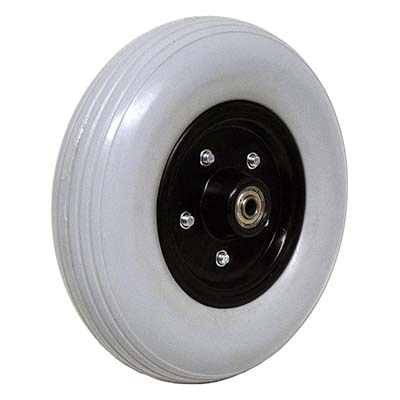
While it’s true that foam-filled tires require less maintenance, the total cost of ownership can take its toll. They do wear down over time, so you’ll have to pay for replacements or refilling.
On the other hand, air-filled is widely accepted as a standard wheelchair component, so you get more size options, and they’re less expensive to replace.
Keep in mind that you’ll have to constantly keep the tire pressure in check, which can get tedious since air-filled tires are always losing air.
On the other hand, foam-filled stays at the same level of pressure, so convenience is in your favor here. Plus, the consistency ensures a smoother ride.
Foam Filled Power Chair Tires Pros and Cons
PROS
CONS
As you can see, foam-filled tire advantages far outweigh the disadvantages. These wheels are built to last, with a solid, flexible core that is impenetrable.
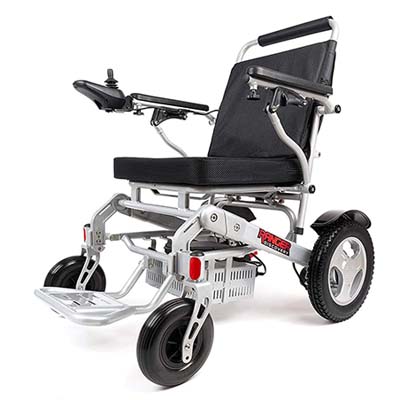
This does render a stiffer tire, but you still get the same tread and quality as a standard air-filled tire. Plus, you’ll never have to worry about an uneven ride since foam-filled wheels maintain the same consistent air pressure throughout their lifetime.
The big thing to consider with these wheels is the terrain you’ll be frequenting and the types of activities you’ll do.
This is the deciding factor that makes foam-filled wheels incredibly handy or an utter nuisance.
If you live in a rough, rural region with a lot of rocks and foliage or work on a construction site where nails litter the ground, then foam-filled wheels ensure you’ll never have to deal with an unexpected flat.
Also, foam-filled tires do great for indoor use on smooth surfaces, although bear in mind they’re heavier to push.
If you use your wheelchair to play sports or you prioritize a smooth, comfortable ride, then you might want to consider air-filled over foam-filled. Hard foam has its benefits, but it doesn’t bounce over bumps with ease.
Final Thoughts on Foam Filled Tires For Power Wheelchairs
Foam-filled tires can achieve certain mobility feats that air-filled just can’t compete with, the biggest being that foam tires can’t be punctured.
This gives them the edge for users who frequently use their wheelchairs in rugged terrain where rocks, glass, nails, and sharp edges can cause damages to air-filled tires.
However, foam-filled tires are heavy and stiff. If you live in the city or play sports, you might not want the burden (and bumpy jolts) of pushing these wheels around. It all comes down to your lifestyle and how you want to move.